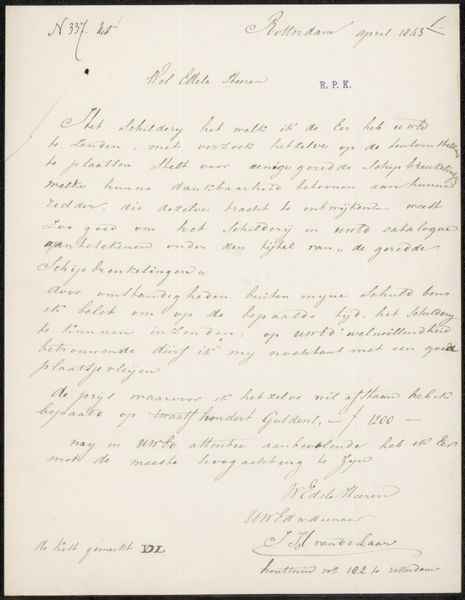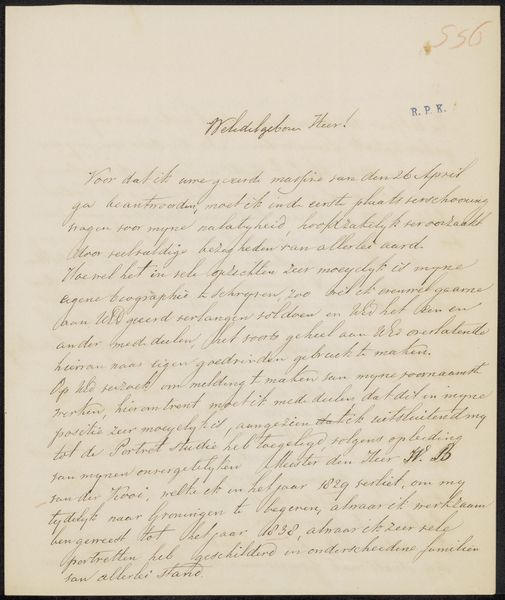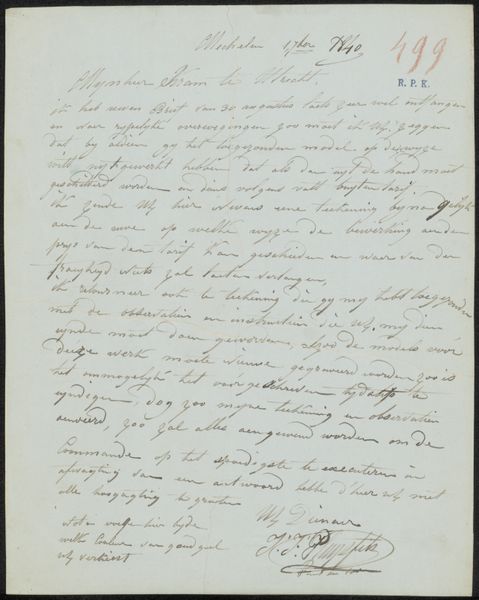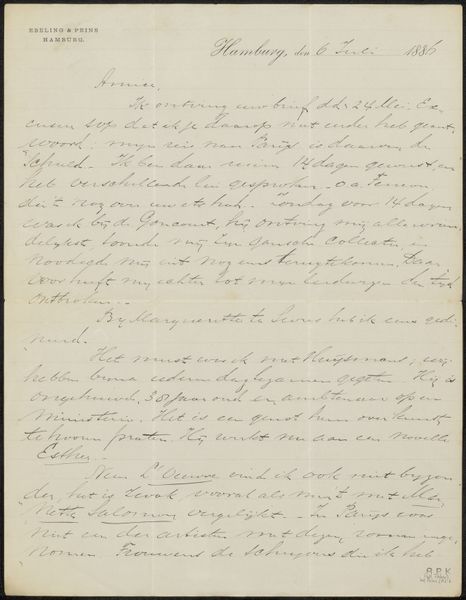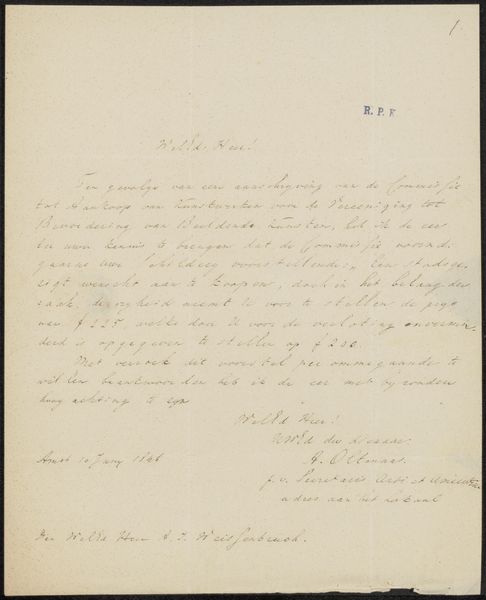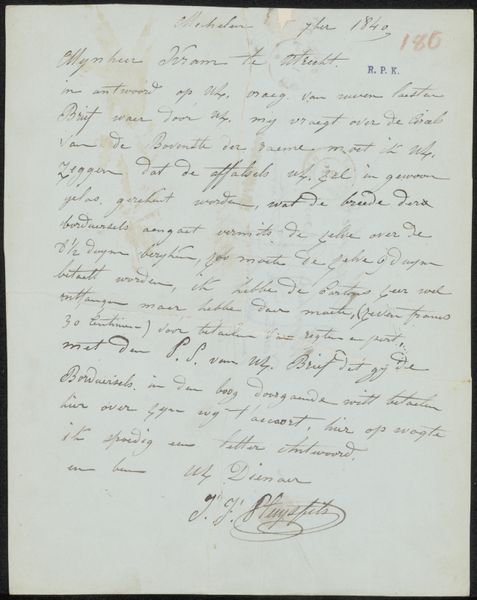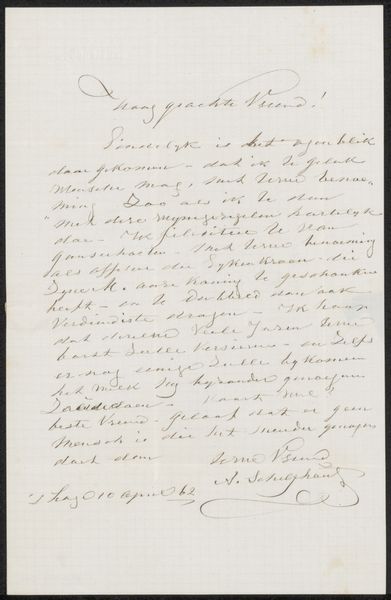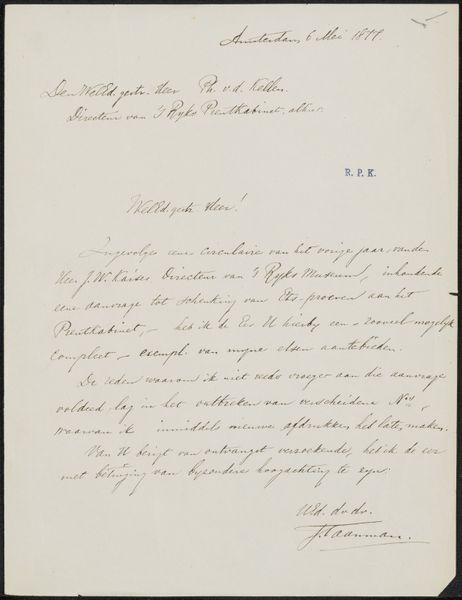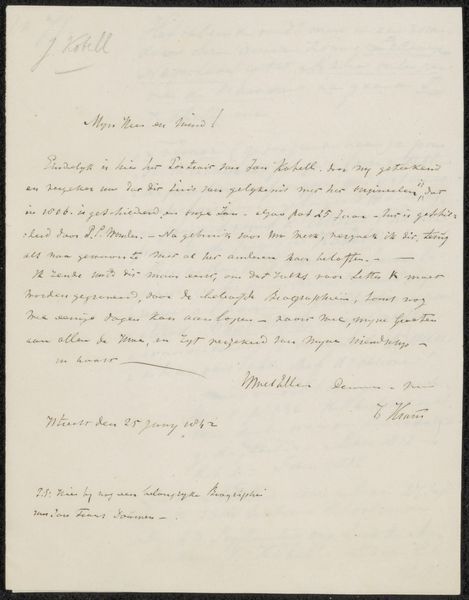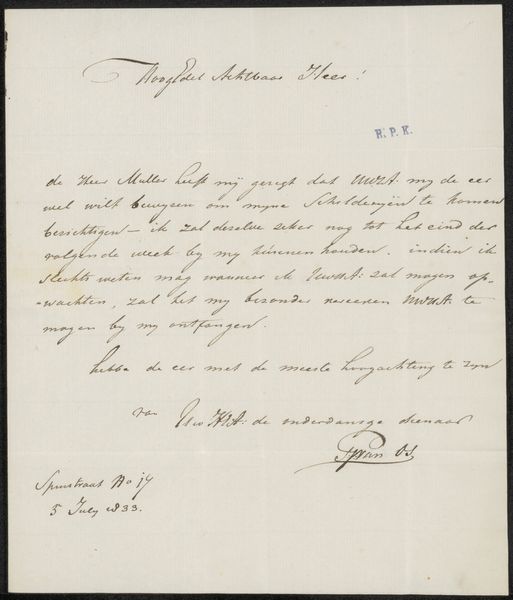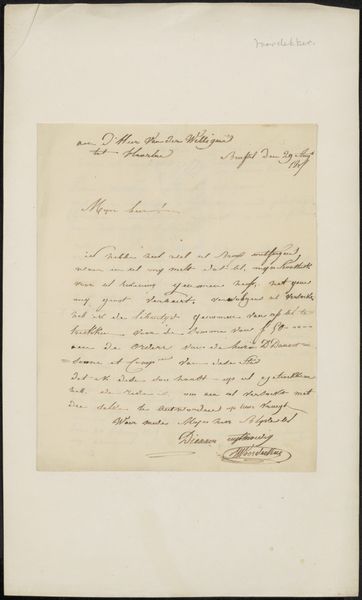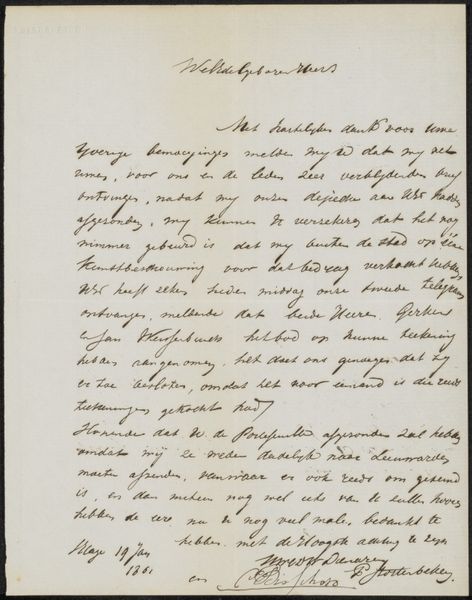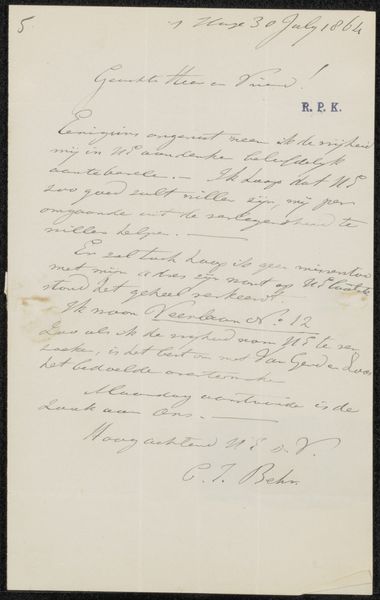
Brief aan de adjudant van Willem II (Koning der Nederlanden) Possibly 1848
0:00
0:00
edouardtaurel
Rijksmuseum
drawing, paper, ink, pen
#
drawing
#
hand-lettering
#
ink paper printed
#
hand drawn type
#
hand lettering
#
paper
#
personal sketchbook
#
ink
#
hand-drawn typeface
#
pen-ink sketch
#
pen work
#
sketchbook drawing
#
pen
#
history-painting
#
sketchbook art
#
calligraphy
Copyright: Rijks Museum: Open Domain
Edouard Taurel crafted this letter to the adjutant of William II, King of the Netherlands, in 1848, using paper and ink. But it’s not just the content of the message that’s of interest; it’s the very act of handwriting in this period. Consider the labor involved: the careful preparation of the paper, the mixing of the ink, the deliberate formation of each letter. Before mass printing, handwriting was a valued skill, connecting the writer directly to the recipient through the physical trace of their hand. The texture of the paper, the weight of the ink, even the rhythm of the script – all contribute to the letter's meaning. This wasn't just about conveying information; it was about asserting status, demonstrating education, and maintaining social bonds. The meticulous penmanship speaks to a culture where craft and communication were intertwined, a far cry from our digital age of mass-produced texts. It reminds us that even the simplest objects can carry profound cultural significance, challenging the divide between art and everyday life.
Comments
No comments
Be the first to comment and join the conversation on the ultimate creative platform.
